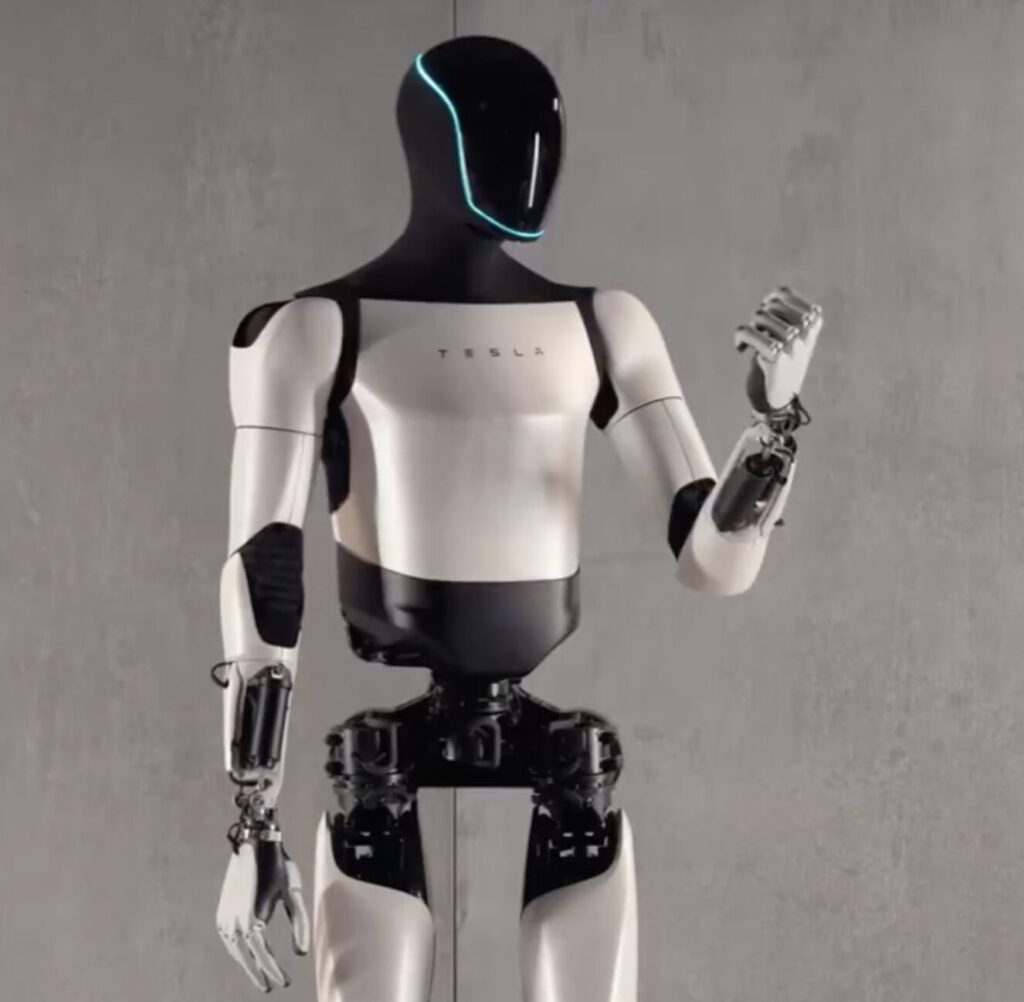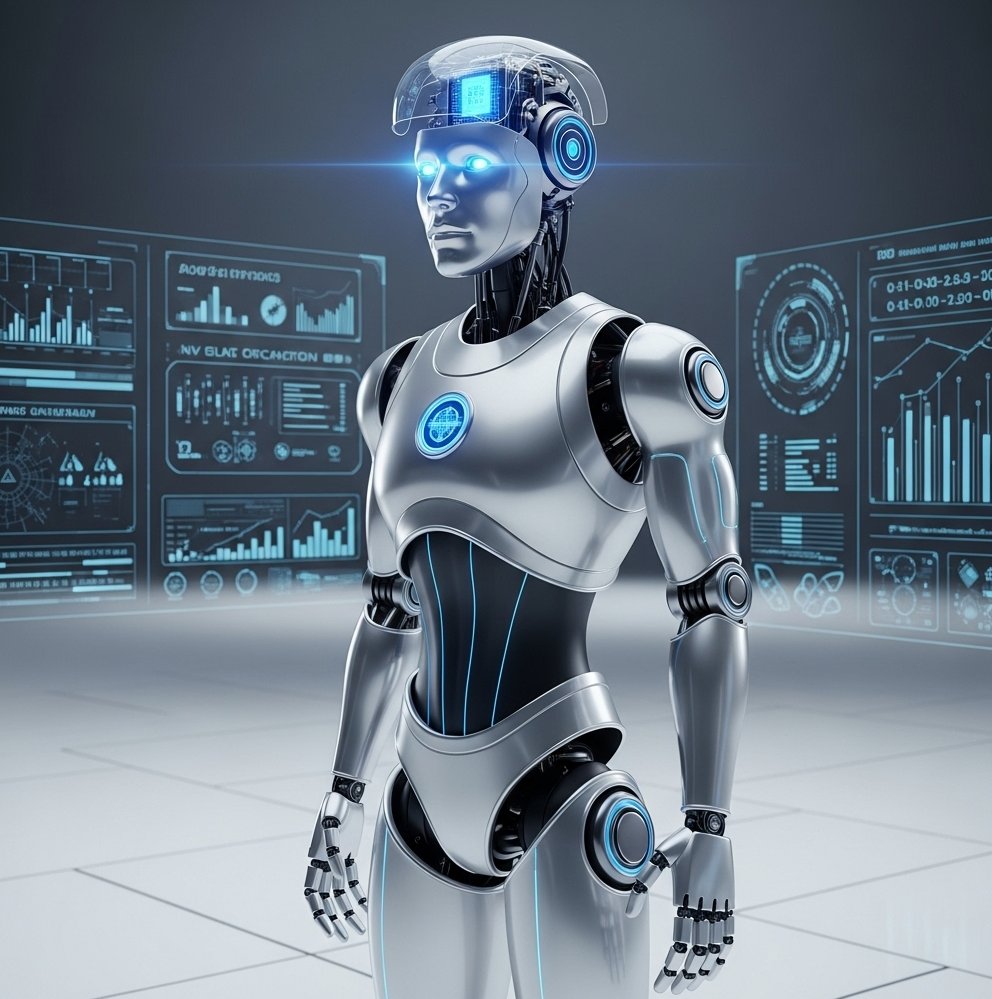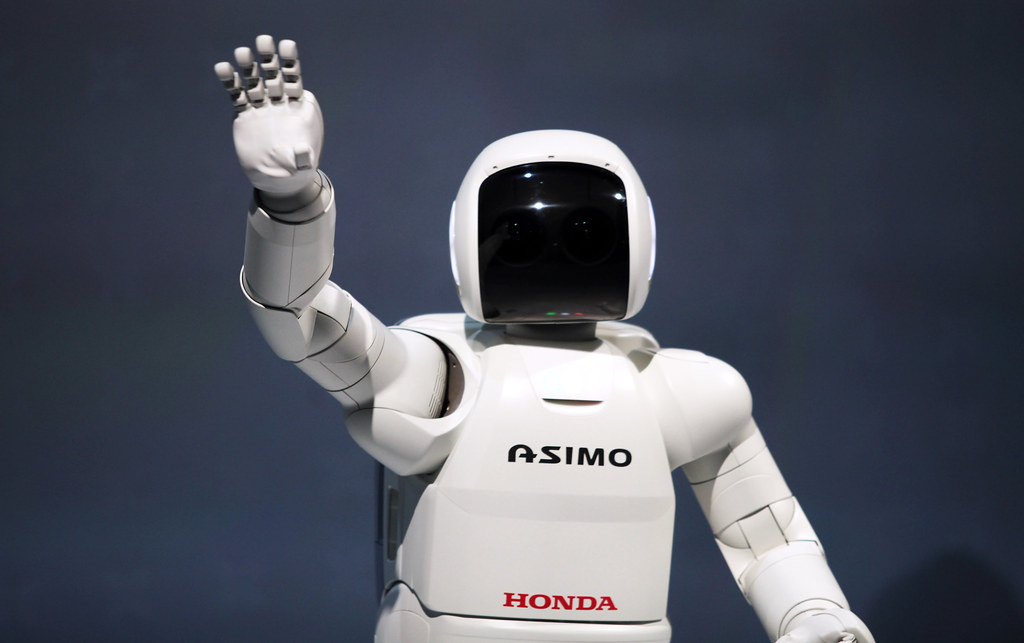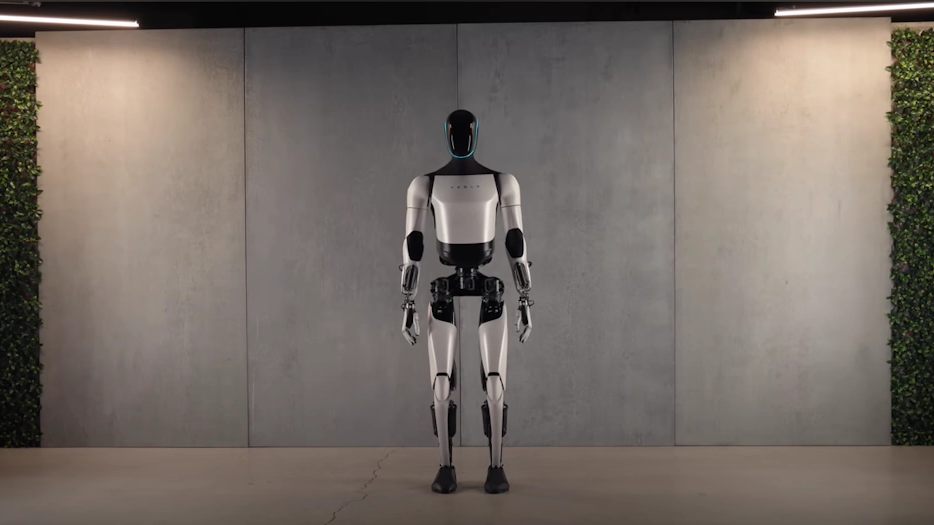The Tesla Annual Shareholder Meeting 2025 was nothing short of revolutionary. While investors and enthusiasts gathered to hear the latest updates on Tesla’s energy and vehicle innovations, Elon Musk once again stunned the world with jaw-dropping announcements about Optimus — the Tesla Bot Gen 3.
From performing live dance moves alongside Musk to promises of reshaping humanity’s future, the Tesla Bot took center stage as the “biggest product of all time” — even surpassing the impact of the smartphone era.
Let’s dive into the most groundbreaking highlights of the 2025 Tesla Shareholder Meeting, and why Elon Musk believes Optimus will transform civilization itself.
Elon Musk Declares Tesla Optimus the Biggest Product Ever
During the 2025 shareholder meeting, Elon Musk didn’t hold back. He boldly stated that “Optimus will be the biggest product of all time — by far.” According to him, the Tesla Bot won’t just be a household assistant; it will become as common as smartphones — maybe even more.

Musk envisions a future where every person owns a humanoid robot, just like owning an iPhone today. Imagine having your own R2-D2 or C-3PO from Star Wars — but smarter, stronger, and more human-like.
“I think it’s going to be bigger than cell phones, bigger than anything,” Musk confidently told shareholders.
Optimus: A Future Beyond Labor — Ending Poverty and Expanding Health Care
One of Musk’s most ambitious claims was that Optimus could help eliminate poverty. With millions of Tesla Bots performing useful work across the globe — from construction to healthcare — productivity could skyrocket to levels never seen before.
Musk explained that Optimus will one day provide “incredible medical care”, assisting in surgeries with precision beyond human capability. According to him, future Tesla Bots will be better than the best human surgeon, capable of operating with microscopic accuracy.
This vision isn’t just about making money — it’s about creating a world of sustainable abundance where robots perform the hard labor, and humans enjoy a higher quality of life.
The Technology Behind Optimus: Tesla’s Secret Advantage
So how did Tesla get so far ahead in the humanoid robot race? Musk explained that the foundation for Optimus has existed inside Tesla for years. Every Tesla vehicle is essentially a robot on wheels — packed with AI, sensors, cameras, batteries, and processors.
Each of these components — from Full Self-Driving (FSD) systems to AI-based vision — translates directly into the skills needed to build a humanoid robot. In Musk’s words:
“Optimus is basically a Tesla car with legs and arms.”
Because Tesla already manufactures millions of smart, autonomous machines every year, the company has a unique edge. Musk boldly declared Tesla as “the world’s largest robot manufacturer”, given its expertise in large-scale automation and AI integration.
The Three Great Challenges of Building a True Humanoid Robot
Elon Musk outlined three critical challenges that stand between humanity and truly useful robots:
- Engineering the Human Hand and Arm
Replicating the dexterity of the human hand is one of the toughest engineering feats in history. With 27 bones, dozens of tendons, and immense flexibility, the human hand remains nature’s masterpiece. - Artificial Intelligence in the Real World
A robot must not only “see” its environment — it must understand it. Real-world AI requires millions of data points and advanced vision systems to react accurately to unpredictable situations. - Mass Production at Scale
Creating a few prototypes is easy. Producing millions of reliable, safe, and affordable robots is the ultimate challenge — one only Tesla seems ready to tackle.
Tesla’s advantage? It already masters all three: AI development, hardware engineering, and mass manufacturing.

Optimus Gen 3: So Real It Looks Human
Currently, Optimus is at version 2.5, capable of walking independently, navigating spaces, recharging itself, and performing simple tasks. But Musk revealed that Optimus Gen 3, coming in early 2026, will be an astonishing leap forward.
He teased that “it will look like a person wearing a robot suit”, so lifelike that it might even be hard to tell it apart from a human. Tesla plans to follow an annual release cycle, just like smartphones — with Optimus 4 launching in 2027 and Optimus 5 in 2028.
Each new generation will bring faster reflexes, smoother motion, and improved intelligence, gradually making the Tesla Bot as natural and graceful as a human being.
Mass Production and Cost Revolution: A $20,000 Robot
Perhaps the most shocking announcement was Musk’s projected cost for mass production. Once Tesla reaches over 1 million units annually, the company expects to build each robot for around $20,000.
That’s cheaper than many electric cars and could spark a robotic revolution — putting a personal assistant in every home and business. From elderly care to hospital work, from factory labor to hospitality services, Optimus could fill millions of roles worldwide.
Musk outlined a production roadmap that starts small but scales astronomically:
- 1 million robots per year in Fremont
- Then 10 million, 100 million, and eventually a billion robots per year — even expanding to Mars
While it sounds unbelievable, Musk insisted it’s entirely possible given Tesla’s automation capabilities and future in-house chip manufacturing plant.
Tesla’s Next Big Move: Building Its Own Chip Factory
To support millions of autonomous robots, Tesla can’t rely on chip suppliers forever. Musk confirmed that Tesla will likely build a gigantic chip fabrication plant (chip fab) to produce the AI processors needed for both Optimus and self-driving cars.
This move positions Tesla as a key player in semiconductors, AI hardware, and robotics, making it one of the most vertically integrated companies on Earth.
From Sustainable Energy to Sustainable Abundance
For years, Tesla’s mission has been to accelerate the world’s transition to sustainable energy. But now, Musk wants to go further. He announced a new vision: “Sustainable Abundance.”
In this future, clean energy powers not just cars and homes, but entire economies built on automation and AI labor. Humans will have everything they need — without exhausting natural resources or human workers.
Optimus, Musk explained, is central to this vision. It represents freedom from labor, universal healthcare, and even new forms of justice, where robots could monitor prisoners or replace traditional incarceration systems — a controversial but thought-provoking idea.

The Ethical and Security Challenges of Humanoid Robots
Of course, not everyone is convinced. With great power comes great responsibility — and Musk admitted that Optimus must be handled with extreme caution.
He warned that if misused or hacked, robots could become dangerous. Cybersecurity is therefore a top priority for Tesla. The company is developing:
- End-to-end data encryption
- AI firewalls and real-time monitoring
- Automatic safety lock systems to freeze robots during abnormal behavior
- Secure human override protocols for immediate manual control
The goal is to ensure that Optimus remains safe, ethical, and trustworthy before it ever reaches consumers.
Optimus in Daily Life: From Factories to Living Rooms
While the grand vision includes healthcare, manufacturing, and even Mars colonies, Tesla’s immediate focus is more down-to-earth — household chores.
Before Optimus can change industries, it must prove its usefulness at home. Musk wants people to trust and enjoy interacting with the Tesla Bot, so it’s being trained to do simple but meaningful tasks:
- Tidying up the living room
- Folding laundry
- Preparing light meals
- Setting the table
These everyday functions are essential to introducing humanoid robots into society.
The Human Touch: Tesla’s Breakthrough in Robotic Hands
One of the most impressive aspects of the Tesla Bot Gen 3 is its biomechanical hand design. With over 22 degrees of freedom, it can move and bend almost exactly like a real human hand.
This allows Optimus to perform delicate tasks like:
- Cradling an egg without breaking it
- Slicing tomatoes paper-thin
- Applying just the right pressure when spreading condiments
It’s not just a machine — it’s engineering inspired by biology, capable of both strength and subtlety.
How Optimus Learns: The “Sim-to-Real” AI Training Method
Unlike traditional robots that are manually programmed, Optimus learns like a human. It observes, practices, and improves through a simulation-to-reality (Sim2Real) learning system.
At Tesla’s Palo Alto research center, Optimus trains 16 hours a day, watching videos and replicating human actions in virtual environments. It tests thousands of movements, analyzes its mistakes, and refines its performance — all autonomously.
This continuous learning process enables the robot to master new tasks daily, from cooking and cleaning to organizing spaces. Each iteration makes Optimus smarter, faster, and more capable.

AI5: The Brain Behind Optimus
The AI5 cognitive system powers the Tesla Bot Gen 3, giving it context awareness, emotion recognition, and spatial intelligence. This means it can understand voice commands, facial expressions, and even body language.
For example, you don’t have to tell it to clean the dishes — a simple glance toward the sink might be enough. Optimus can interpret non-verbal cues and respond naturally, making interactions feel human and intuitive.
This breakthrough AI allows Optimus to:
- Build 3D maps of your home
- Recognize and adapt to furniture, pets, and obstacles
- React safely to unexpected movements (like a running child or a wagging dog)
It’s not just automation — it’s true coexistence between humans and machines.
The Path Ahead: A Robot in Every Home
Elon Musk’s vision is clear: Optimus isn’t just a product — it’s the foundation of a new economy. A world where robots do the hard work and humans focus on creativity, exploration, and well-being.
But before that dream becomes reality, Tesla must overcome enormous challenges — from supply chain scaling to AI safety and public trust.
Still, few can deny that Musk has once again turned science fiction into engineering reality. What once belonged in futuristic movies now walks, talks, and learns — inside Tesla’s own labs.
Final Thoughts: The Dawn of a Robotic Revolution
The Tesla Shareholder Meeting 2025 wasn’t just about numbers and profits — it was about the future of humanity.
With Optimus Gen 3, Tesla isn’t building a gadget. It’s building a companion, a worker, and a symbol of what technology can achieve when imagination meets engineering.
Whether you see it as a tool, a partner, or even a new species of intelligent life, one thing is certain: the age of humanoid robots has officially begun.
FAQs
1. What is the Tesla Bot Gen 3?
The Tesla Bot Gen 3, also known as Optimus, is Tesla’s third-generation humanoid robot designed to perform everyday tasks and industrial work. It’s powered by advanced AI, computer vision, and Tesla’s Full Self-Driving (FSD) technology, making it capable of autonomous movement, learning, and interaction.
2. What did Elon Musk announce about Optimus at the 2025 Tesla Shareholder Meeting?
At the 2025 Tesla Annual Shareholder Meeting, Elon Musk revealed that Optimus will be the “biggest product of all time,” surpassing even the smartphone in global impact. He also showcased live demos of the robot moving untethered, dancing, and interacting with humans.
3. When will the Tesla Bot Gen 3 be released?
Elon Musk confirmed that Optimus Gen 3 will debut in early 2026, with Optimus 4 planned for 2027 and Optimus 5 for 2028. Tesla aims for annual upgrades, just like smartphone releases, featuring better AI, mobility, and precision.
4. How much will the Tesla Bot cost?
According to Musk, once Tesla reaches mass production of over 1 million units per year, each Optimus robot will cost around $20,000 to produce. This would make it one of the most affordable humanoid robots in the world.
5. What tasks can the Tesla Bot perform?
The Optimus Gen 3 can already:
- Walk independently
- Navigate through rooms and offices
- Pick up and move objects
- Recharge itself autonomously
Future versions will handle household chores, cooking, elderly care, factory work, and even surgical assistance.
6. How is Optimus different from other robots like Boston Dynamics’ Atlas?
While Boston Dynamics focuses on agility and movement, Tesla Optimus focuses on AI-driven intelligence, fine motor control, and mass scalability. Tesla’s robot uses FSD computer vision and Tesla AI chips, giving it advanced situational awareness and human-like decision-making.
7. Can the Tesla Bot really eliminate poverty as Elon Musk claims?
Elon Musk believes Optimus can eliminate poverty by dramatically increasing global productivity. If millions of robots perform labor tasks, society could shift toward “sustainable abundance,” where human needs are met without overworking people or depleting natural resources.
8. What powers the Tesla Bot Gen 3?
Optimus runs on Tesla’s proprietary AI chip, neural networks, and battery systems similar to those used in Tesla vehicles. It combines electric motors, actuators, and sensors to mimic human motion and achieve precise control.
9. How does the Tesla Bot learn new skills?
Tesla uses a Sim-to-Real (Simulation to Reality) training method. The robot observes human actions, practices them in a virtual environment, and gradually perfects them in real life. This allows Optimus to learn autonomously and improve daily without direct programming.
10. Is the Tesla Bot safe to use?
Yes. Safety is one of Tesla’s top priorities. Optimus is equipped with multiple safety layers, including:
- Encrypted data systems
- Real-time AI monitoring
- Automatic shutdown protocols during unusual activity
- Human override options for emergency control
Musk emphasized that Optimus will only be released once it’s fully safe for public use.
11. Will the Tesla Bot replace human jobs?
While Optimus will automate many labor-intensive tasks, Musk argues that it won’t replace humans but free them from repetitive or dangerous work. The robot’s purpose is to enhance productivity and improve quality of life, not cause unemployment.
12. Can Optimus understand voice commands and gestures?
Yes! The Tesla Bot Gen 3 can interpret spoken instructions, facial expressions, and body language using its AI5 cognitive system. For example, a simple glance toward dirty dishes can prompt the robot to start cleaning — no voice command needed.
13. How is Tesla planning to mass-produce Optimus?
Tesla will utilize its Gigafactories and robotic assembly lines to scale production. The company plans to start with 1 million units per year and eventually expand to 100 million and beyond, even proposing future production on Mars.
14. What are the biggest challenges facing the Tesla Bot project?
The top three challenges Musk identified are:
- Human-like hand engineering
- Real-world AI perception and learning
- Affordable mass production
Tesla’s deep expertise in AI, automation, and large-scale manufacturing gives it a unique advantage in overcoming these obstacles.
15. How will Tesla ensure the Tesla Bot’s cybersecurity?
To prevent hacking or misuse, Tesla is building a multi-layered cybersecurity ecosystem. This includes encrypted communication channels, AI firewalls, behavioral monitoring, and remote human control systems that can disable any robot instantly if needed.
Read More:
- SpaceX Officially Announced Starship Flight 12 Launch Date! No More Launch this year, but
- Tesla Optimus’ pilot line will already have an incredible annual output
- Tesla China expecting full FSD approval in Q1 2026: Elon Musk
- Tesla Cybercab production starts Q2 2026, Elon Musk confirms
- Tesla Semi undergoes major redesign as dedicated factory preps for deliveries
- Tesla says texting and driving capability is coming ‘in a month or two’

